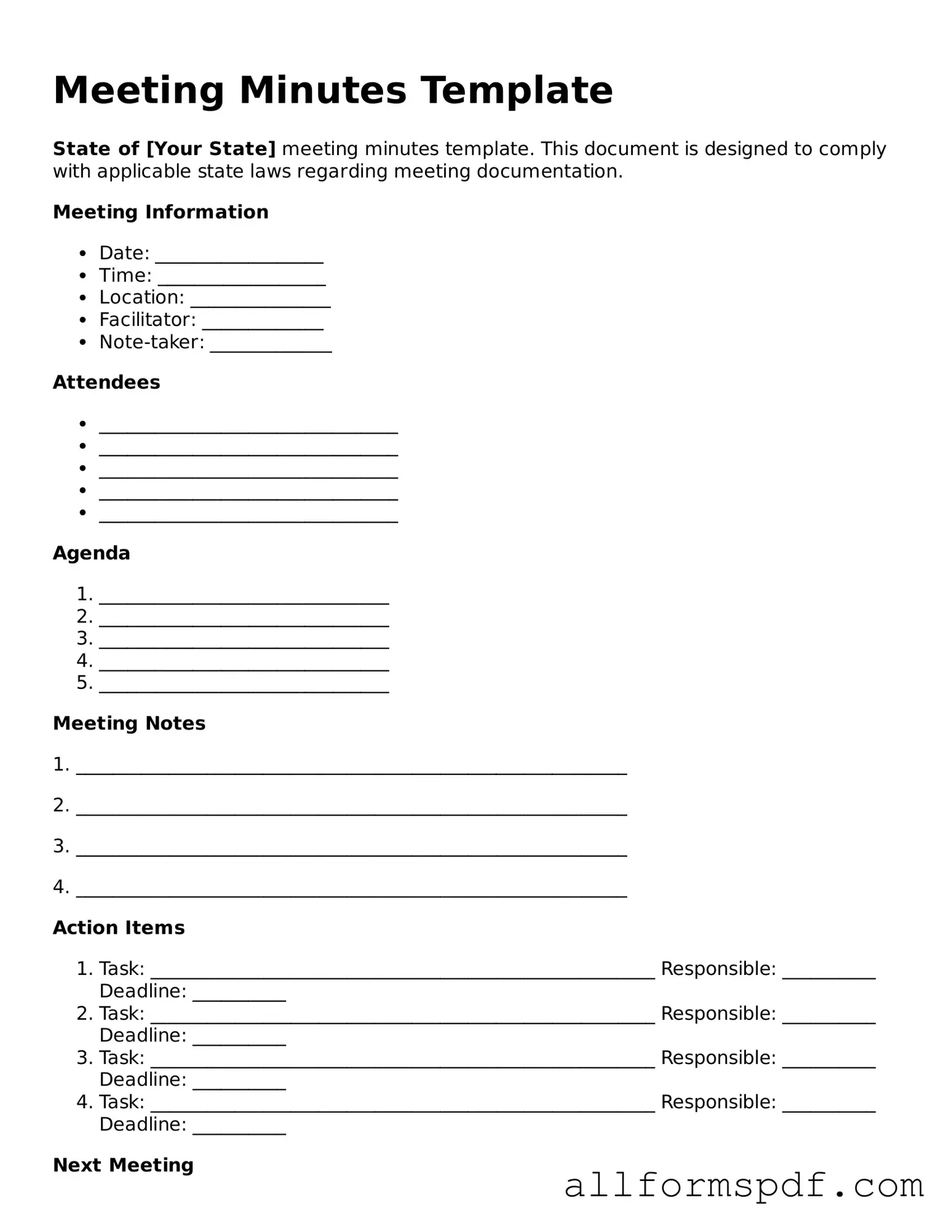Printable Meeting Minutes Form
The Meeting Minutes form is a vital document that captures the key discussions, decisions, and actions taken during a meeting. It serves as an official record, providing clarity and accountability for participants and stakeholders alike. By documenting these details, organizations can ensure that everyone stays informed and aligned on future tasks and responsibilities.
Create My Meeting Minutes Now
